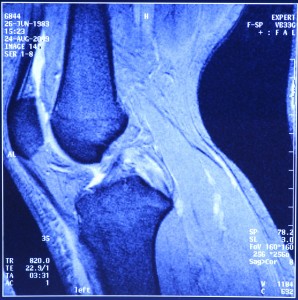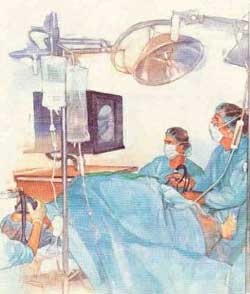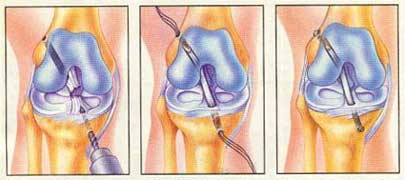 Which treatment option is best for you – whether non surgical or surgical – depends on many things. Treating your injury without surgery is possible if no other tissue is injured and if your lifestyle won’t put high demands on you joint. An athlete or more active person, on the other hand, might need surgery to give the knee joint an extra edge against re-injury. Rehabilitation follows either treatment option.
Which treatment option is best for you – whether non surgical or surgical – depends on many things. Treating your injury without surgery is possible if no other tissue is injured and if your lifestyle won’t put high demands on you joint. An athlete or more active person, on the other hand, might need surgery to give the knee joint an extra edge against re-injury. Rehabilitation follows either treatment option.
Non-surgical Treatment
This treatment programme includes a period of rest and exercise prescribed by your doctor. After injury, your doctor may recommend ice and elevation to control swelling. Using crutches or a brace helps you temporarily rest your joint so it can heal. Then your doctor or a physical therapist may design an exercise programme to help return you to activity. Strengthening your muscles to make up for your weakened ligament is a necessary long-term commitment.

Surgery
The most common type of surgery for an ACL injury is reconstruction, which involves replacing the torn ligament with a tendon (graft) from your knee or a synthetic material. Fastening the graft with screws is one commonly used technique. To reconstruct your ACL, your doctor may combine open surgery with arthroscopy, a technique using smaller incisions to look and work inside your joint. Surgery is followed by several months of rehabilitation to help restore your knee’s normal function.
Your pre-op checklist
- Don’t eat or drink after midnight, the day before surgery
- Arrange for a ride home for when you’re released from the hospital
- Bring any x-rays or other medical records with you as advised by your doctor
Arthoscopy
Using an arthoscope and instruments, your doctor may first identify and treat any additional injuries, such as a torn meniscus. Then small holes are drilled in your bone to prepare for graft reconstruction.

Obtaining the graft
Your doctor makes an incishosco remove the tendon to be used for the graft. An additional tendon on the outside of your joint may be transferred to provide extra stability for your knee.
Fastening the graft
The graft is inserted into he drilled holes and fixed in place with screws. A temporary drain or small tube may be placed in your joint to keep it free of excess fluid. Then your incisions are closed.
Risks and complications
As with other surgeries, reconstruction involves a small risk of infection and blood vessel or nerve injury. There is also some risk that a graft may tear or stretch over time. And scar tissue may form around the graft, later requiring treatment.
After Surgery
Right after surgery, you’ll spend one to two hours in a recovery area. Your leg may be elevated on pillows and your knee immobilised by a brace. During your two to three days in the hospital, your knee will be bandaged and wrapped. Under the direction of a physical therapist, you may begin light exercise to keep your knee from stiffening or a machine may help move your joint. If you have a drain, it will be removed before you go home.
